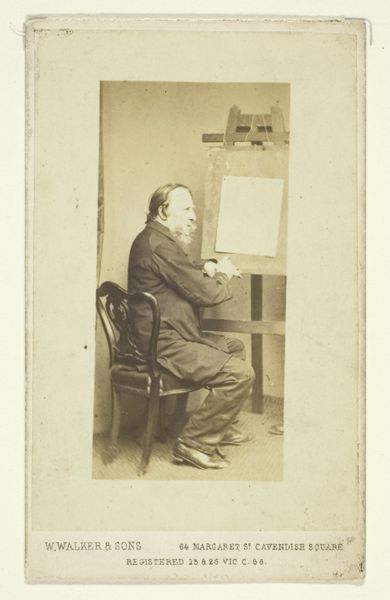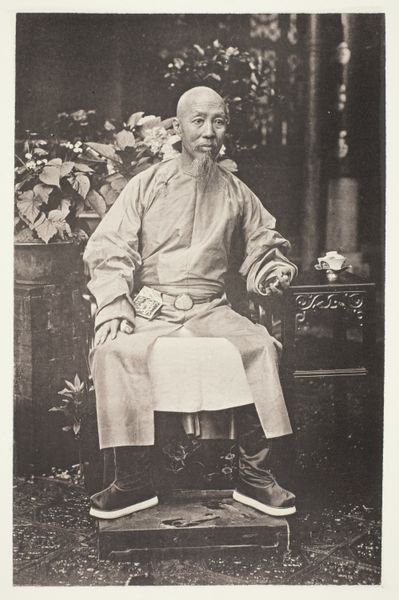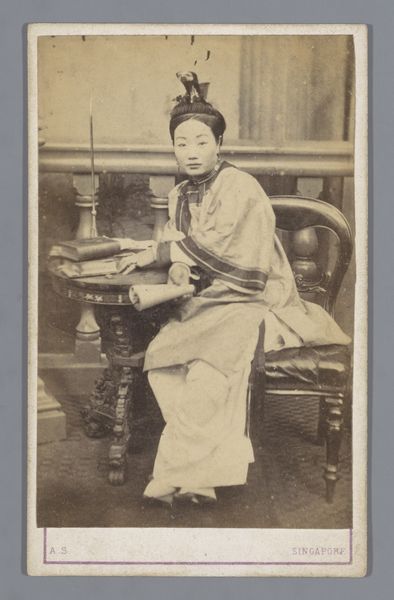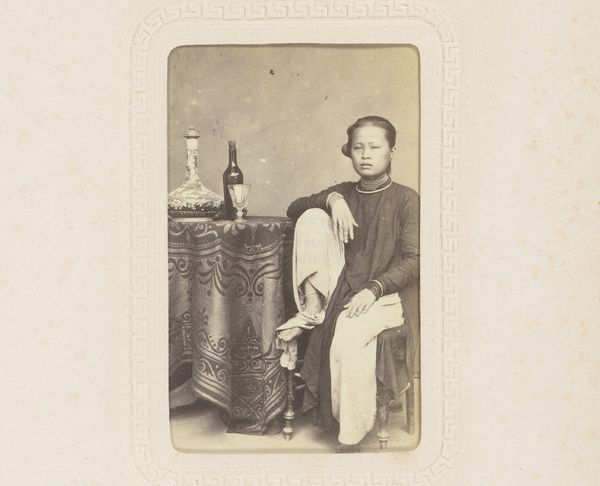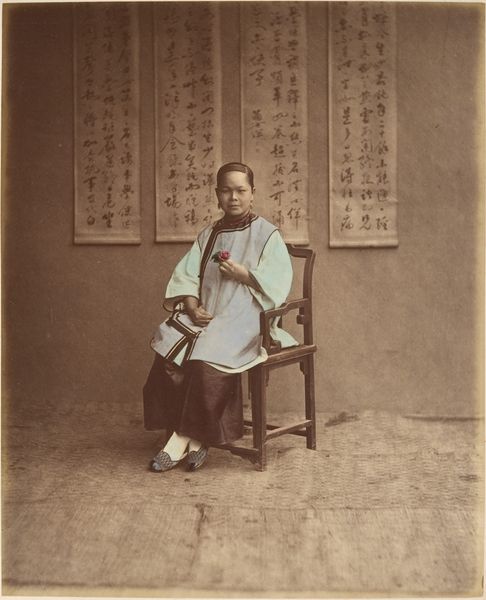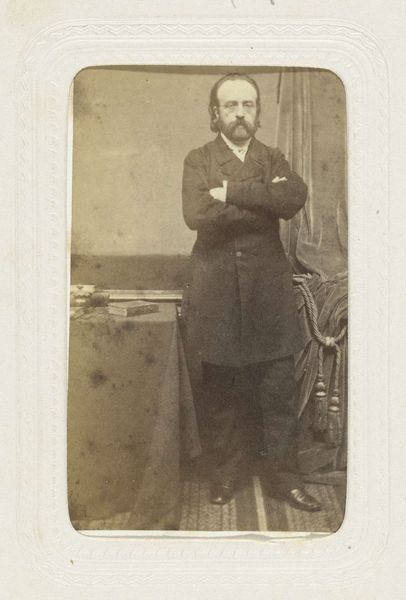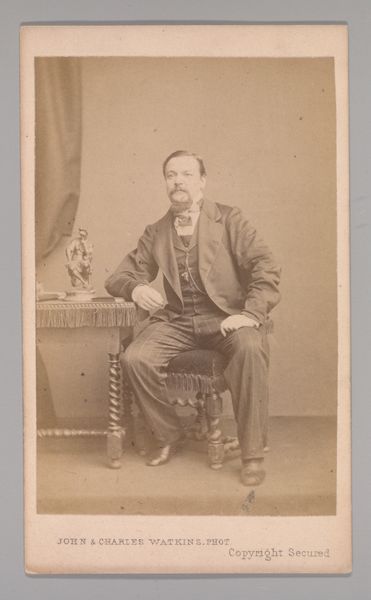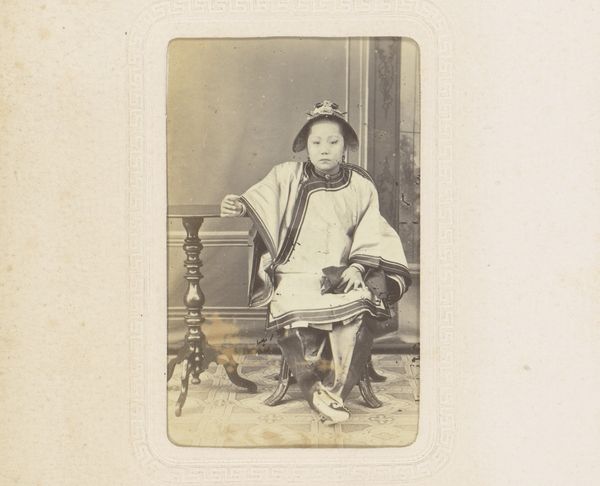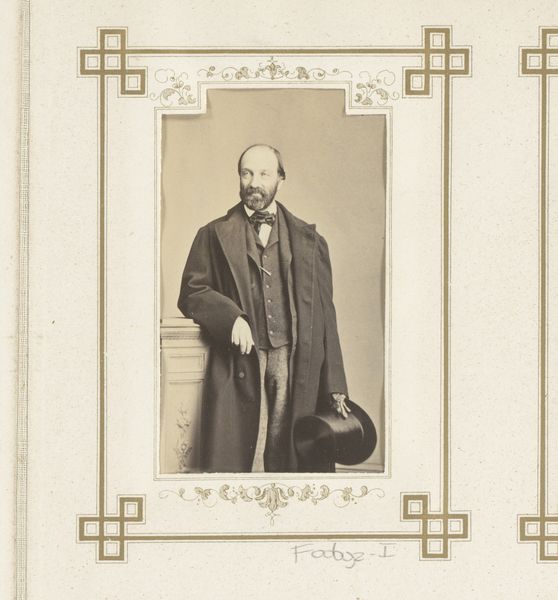
The Far East: A Monthly Journal, Illustrated with Photographs 1870s
0:00
0:00
photography, albumen-print
#
portrait
#
asian-art
#
photography
#
historical photography
#
orientalism
#
19th century
#
men
#
albumen-print
Copyright: Public Domain
Editor: This albumen print, part of "The Far East: A Monthly Journal" from the 1870s, depicts a formal portrait. It shows a seated man with a mustache, presumably of high rank given the inscription, in what appears to be traditional Chinese clothing. It definitely has a sense of 19th-century formality and also a somewhat romantic exoticism. What strikes you most when you look at this image? Curator: Well, consider the chair upon which "His Excellency Li Hung-Chang" is seated. Is it a throne? No. It seems to be a Western adaptation of a traditional form, reflecting perhaps his status bridging cultures. His hand positioning, the subtle yet firm grip—it's about power, isn't it? Authority communicated through symbolic gesture. Editor: Yes, I see that. And what about the patterns behind him – are those symbolic, too? Curator: Certainly! The intricate lattice work creates a backdrop both decorative and purposeful. Each pattern, repeated, suggests a microcosm of the broader cultural order. Notice how it's deliberately blurred, softening the potential direct comparison between the figure and rigid structures. What memory do these repetitive patterns call to your mind? Editor: It reminds me a bit of a garden, controlled but still part of the natural world. So is the message here about power, control, and nature all working together? Curator: An interesting interpretation. It may suggest an effort to harmonize. To portray a leader at peace and one with his surrounding culture, whilst incorporating western influences. And what do you make of that vase holding the flowers there to the left of him? The objects around a figure are always clues. Editor: It’s very subtle. Almost like an afterthought. But you’re right. It might reinforce the idea of nature, harmony, or even fleeting beauty and ephemeral things. It gives a very delicate almost melancholic mood. It makes me want to do more research about him now! Curator: Absolutely! Indeed, by examining these layers of cultural symbolism, the artwork offers glimpses into both the depicted era and the continuous dialogue between perception, power and identity, wouldn't you agree?
Comments
No comments
Be the first to comment and join the conversation on the ultimate creative platform.

